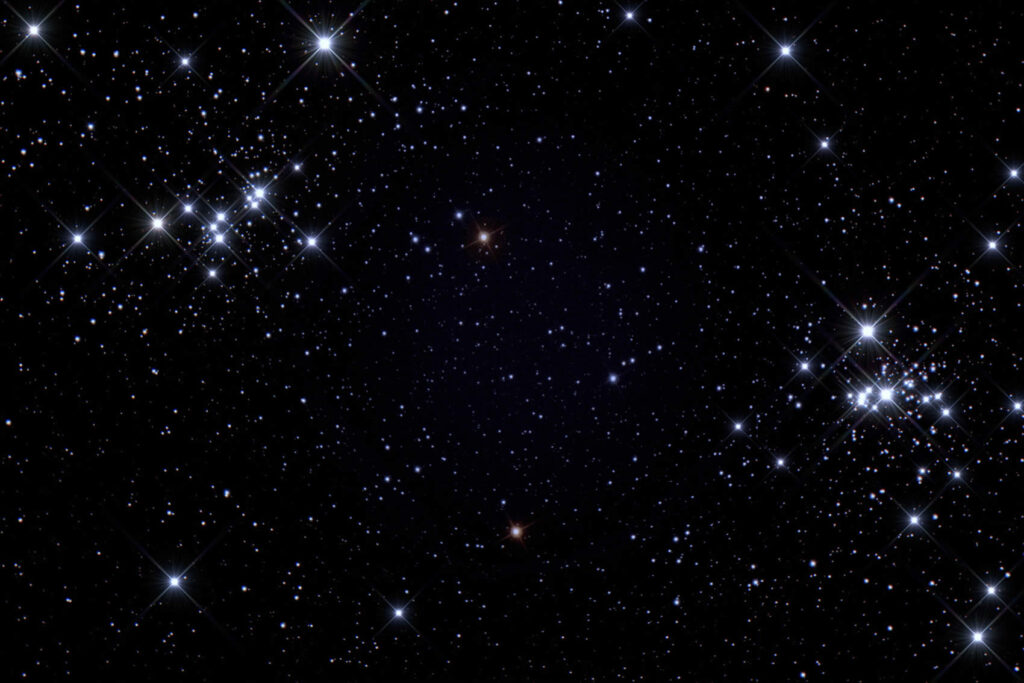A stunning pair of open star clusters in the constellation Perseus, in our Milky Way galaxy. These clusters are a "line of sight" double, meaning that they only appear as a pair from our perspective. In fact, one cluster is 300 light years (1,800,000,000,000,000 miles) closer than the other, or roughly 70 times the distance of our Sun to the nearest star.
Red giant stars, millions or tens of millions of times larger than our Sun, are frequently associated with open star clusters, and you can easily detect several in this image. Note that this image only captures the core of each cluster. The full extent of each cluster would require a wider field of view.
The Double Cluster is a naked eye object, visible as a small, hazy patch under a dark sky. The first known reference to the object was in the second century BC by the Greek astronomer Hipparchus, but it doubtless was observed by countless others in antiquity. The first person to note that the hazy patch was in fact two star clusters was the 18th century English astronomer, William Herschel. Inexplicably, the great 18th century comet hunter, Charles Messier, who discovered hundreds of prominent objects in his search for comets, never mentions it.
Consider that when you observe this object with the naked eye under a dark sky you are seeing an object that is 7,000 light years away. That's 30,000,000,000,000,000 (30 quadrillion) miles! However, it is not the farthest object you can see from Earth with the naked eye. That distinction belongs to the Andromeda Galaxy (M31) at 2.5 million light years, or some 10,500,000,000,000,000,000 (10.5 quintillion) miles, although some have claimed spotting the galaxy M105 at a distance of 10 million light years.
The "Double Cluster" in Perseus (NGC869 and NGC884)
Date Taken:September 26, 2008
Location Taken: Conditions of Location:FWHM 1.92
Equipment Used:14.5" Ritchey-Chretien telescope, SBIG STL11000 CCD camera, Astrodon RGB filters, TCC, PIR, remote guide head used with Takahashi Sky90 for autoguiding, T-Point used for polar alignment (required for each imaging session due to my portable setup) with 0.7' polar alignment accuracy after two 12-star mapping runs.
Processing Used:12x90 seconds RGB, processed in Maxim DL and Photoshop (total exposure 54 minutes).
Distance from Location:7,100 light years (NGC 869) and 7,400 light years (NGC 884)
Constellation:Perseus (son of Zeus, and conqueror of the Medusa, in Greek mythology)
Other Link:

How sparkly!
Once again, a spectacular shot! It also primed my heart for my traditional viewing of “It’s a Wonderful Life.” 🙂 Angels getting their wings…
Infinita come la mente di un genio che fa della sua passione un arte, Richard. Stupenda, bravo.